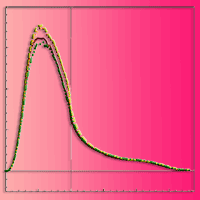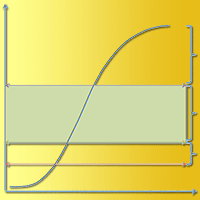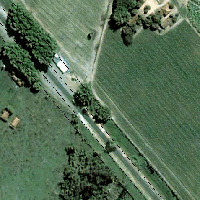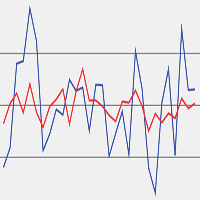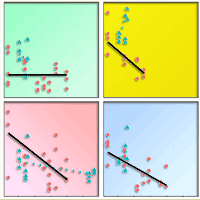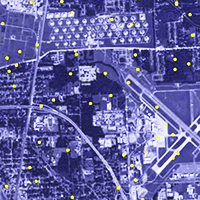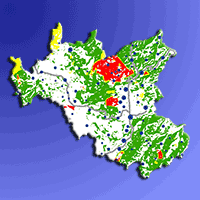
Forest management with carbon scenarios in the central region of Mexico
Agustín Ramírez-Martínez (1), Manuel de Jesús González-Guillén (1) , Héctor Manuel De Los Santos-Posadas (1), Gregorio Ángeles-Pérez (1), Wenceslao Santiago-García (2)
iForest - Biogeosciences and Forestry, Volume 14, Issue 5, Pages 413-420 (2021)
doi: https://doi.org/10.3832/ifor3630-014
Published: Sep 15, 2021 - Copyright © 2021 SISEF
Research Articles
Abstract
The search for mechanisms to mitigate global warming has generated a series of proposals to reduce deforestation and promote conservation of forests as carbon stocks through financial or in-kind support. However, the economic implications of including carbon sequestration in forest for timber production have not been dealt with in depth, and the conditions in which combined production might be a profitable option to forest owners, particularly in Mexico, are unknown. The aim of this study was to quantify carbon sequestration in a central region of Mexico and evaluate the profitability of selling carbon credits as well as timber products. Data and information used comes from three inventories (2013, 2014 and 2016) taken in 160 permanent sampling plots of 400 m2 each; forest management costs per hectare were obtained through interviews to the landowners, and the profitability was assessed using the economic indicators Net Present Value (NPV), Internal Return Rate (IRR), Benefit-Cost Ratio (BCR), and Land Expected Value (LEV). The results indicate that, in areas of low productivity, carbon sequestration is profitable only at a low discount rate (3.5%) and a high price of the ton CO2e (USD 100 ha-1 year-1). However, under combined production, the optimal rotation periods are longer, depending on the discount rate and price of sequestered carbon. Therefore, timber production will continue to be the main economic activity, until the rules of operation of the different mechanisms created for carbon sequestration become more flexible and the carbon markets offer more attractive incentives.
Keywords
Climate Change, Carbon Sequestration, Productivity, Financial Profitability, Optimal Rotation
Authors’ Info
Authors’ address
Manuel de Jesús González-Guillén 0000-0003-1814-4320
Héctor Manuel De Los Santos-Posadas 0000-0003-4076-5043
Gregorio Ángeles-Pérez 0000-0002-9550-2825
Colegio de Postgraduados, km. 36.5 Carr. Mexico-Texcoco, Montecillo, Texcoco, C.P. 56230 (México)
Instituto de Estudios Ambientales-División de Estudios de Postgrado-Ingeniería Forestal, Universidad de la Sierra Juárez, Avenida Universidad s/n, C. P. 68725, Ixtlán de Juárez, Oaxaca (México)
Corresponding author
Paper Info
Citation
Ramírez-Martínez A, González-Guillén MJ, De Los Santos-Posadas HM, Ángeles-Pérez G, Santiago-García W (2021). Forest management with carbon scenarios in the central region of Mexico. iForest 14: 413-420. - doi: 10.3832/ifor3630-014
Academic Editor
Marco Borghetti
Paper history
Received: Aug 19, 2020
Accepted: Jul 13, 2021
First online: Sep 15, 2021
Publication Date: Oct 31, 2021
Publication Time: 2.13 months
Copyright Information
© SISEF - The Italian Society of Silviculture and Forest Ecology 2021
Open Access
This article is distributed under the terms of the Creative Commons Attribution-Non Commercial 4.0 International (https://creativecommons.org/licenses/by-nc/4.0/), which permits unrestricted use, distribution, and reproduction in any medium, provided you give appropriate credit to the original author(s) and the source, provide a link to the Creative Commons license, and indicate if changes were made.
Web Metrics
Breakdown by View Type
Article Usage
Total Article Views: 32918
(from publication date up to now)
Breakdown by View Type
HTML Page Views: 27571
Abstract Page Views: 2253
PDF Downloads: 2563
Citation/Reference Downloads: 6
XML Downloads: 525
Web Metrics
Days since publication: 1541
Overall contacts: 32918
Avg. contacts per week: 149.53
Citation Metrics
Article Citations
Article citations are based on data periodically collected from the Clarivate Web of Science web site
(last update: Mar 2025)
Total number of cites (since 2021): 3
Average cites per year: 0.60
Publication Metrics
by Dimensions ©
Articles citing this article
List of the papers citing this article based on CrossRef Cited-by.
References
Estimación del contenido de carbono en los bosques de la empresa forestal integral Guantánamo [Estimation of the carbon content in the forests the forest integral company Guantanamo]. Revista Forestal Baracoa 31: 3-8. [in Spanish]
Gscholar
Estudio de caso del sitio de monitoreo intensivo del carbono en Hidalgo. Fortalecimiento REDD+ y Cooperación Sur [Case study of the site of intensive carbon monitoring in Hidalgo. Strengthening REDD + and South Cooperation]. CONAFOR, COLPOS, Mexico, pp. 105. [in Spanish]
Gscholar
Esquema de pago por servicios ambientales de la Comisión Nacional Forestal, México [Payment scheme for environmental services of the National Forestry Commission, Mexico]. In: “Políticas Públicas y Sistemas de Incentivos Para el Fomento y Adopción de Buenas Prácticas Agrícolas: Como Medida de Adaptación al Cambio Climático en América Central” (Sepúlveda C, Ibrahim M eds). Primera Edición, Turrialba, CATIE, Costa Rica, pp. 291-292. [In Spanish]
Online | Gscholar
Assessing the protection of forest based environmental services in the Greater Mekong sub-region. Asia-Pacific Forestry Sector Outlook Study II, Working Paper Series vol. 14, FAO/UN, Bangkok, Thailand, pp. 67.
Gscholar
Global timber investments and trends, 2005-2011. New Zealand Journal of Forestry Science 44: 1-12.
CrossRef | Gscholar
Los sistemas forestales y la provisión de bienes ambientales [Forest systems and the provision of environmental goods]. In: Jornada Temática “Aspectos Medioambientales de la Agricultura”. Libro Blanco de Agricultura, Madrid, Spain, pp. 12. [in Spanish]
Gscholar
Estimación de la biomasa en un bosque bajo manejo de Pinus patula Schltdl. et Cham. en Zacualtipán, Hidalgo [Biomass estimation in a managed Pinus patula Schltdl. et Cham. forest at Zacualtipan, Hidalgo state]. Revista Mexicana de Ciencias Forestales 106: 105-112. [in Spanish]
Gscholar
Extending forest rotation age for carbon sequestration: a cross-protocol comparison of carbon offsets of North American forests. Masters Project, Nicholas School of the Environment, Duke University, Durham, NC, USA, pp. 51.
Gscholar
Potencial de mitigación del cambio climático de los ecosistemas forestales caducifolios en Costa Rica: modelos predictivos de biomasa y carbono [Potential mitigation of climate change of deciduous forest ecosystems in Costa Rica: predictive models of biomass and carbon]. Revista de Ciencias Ambientales 53: 111-131. [In Spanish]
CrossRef | Gscholar
Sistema de cuentas nacionales de México año base 2013 [System of national accounts of Mexico base year 2013]. Instituto Nacional de Estadística Geográfica e Informática, DF, México, pp. 593. [in Spanish]
Gscholar
Glossary. In: “Climate change 2013. Physical bases. Contribution of Working Group I to the Fifth Assessment Report of the Intergovernmental Group of Experts on Climate Change” (Stocker TF, Qin D, Plattner GK, Tignor M, Allen SK, Boschung J, Nauels A, Xia Y, Bex V, Midgley PM eds). Cambridge University Press, Cambridge, UK, pp. 185-204
Gscholar
Carbono almacenado en la biomasa aérea de plantaciones de hule (Hevea brasiliensis Müell. Arg.) de diferentes edades [Stored carbon in the aboveground biomass of rubber (Hevea brasiliensis Müell. Arg.) plantations at different ages]. Madera y Bosques 22: 49-60. [in Spanish]
CrossRef | Gscholar
Desarrollo de una guía de manejo de la densidad en bosques de segundo crecimiento de roble (Nothofagus obliqua) en la región del Biobío [Stand density management diagrams for roble (Nothofagus obliqua) in the Biobío Region, Chile]. Bosque 34: 201-209. [in Spanish]
CrossRef | Gscholar
Las bases y primeras acciones del programa nacional de mejoramiento silvícola en bosques de coníferas [The bases and first actions of the national silvicultural improvement program in coniferous forests]. SAG-SFF, DF, México, pp. 102. [in Spanish]
Gscholar
Sistema de crecimiento y rendimiento para evaluar sumideros de carbono en bosques de Pinus patula Schiede ex Schltdl. et Cham. bajo aprovechamiento forestal [Growth and yield system to evaluate carbon sinks in managed Pinus patula Schiede ex Schltdl. et Cham. forests]. Agrociencia 54: 241-257. [in Spanish]
Online | Gscholar
Densidad inicial en el rendimiento maderable y biomasa de Pinus patula con especies latifoliadas [Initial density in the timber yield and biomass of Pinus patula with hardwood species]. Agrociencia 54: 555-573. [in Spanish]
CrossRef | Gscholar
Potencial de servicios ambientales en la propiedad social en México [Potential of environmental services in social property in Mexico]. Instituto Interamericano de Cooperación para la Agricultural, Secretaría de la Reforma Agraria, México, pp. 103. [In Spanish]
Gscholar
Estimación de biomasa y carbono almacenado en bosques comunitarios de la región Frailesca de Chiapas, México [Estimation of the biomass and stored carbon in community forest of La Frailesca region of Chiapas, Mexico]. Revista Mexicana de Ciencias Forestales 7: 77-94. [In Spanish]
CrossRef | Gscholar
Procesos de certificación de proyectos de captura de gases de efecto invernadero (GEI) En los Mercados Internacionales de Carbono [Certification processes for greenhouse gas (GHG) capture projects in the International Carbon Markets]. Gestión y Ambiente 12: 07-20. [In Spanish]
Online | Gscholar
Rotación óptima en plantaciones de eucalipto al incluir ingresos por captura de carbono en Oaxaca, México [Optimal timber rotation lenghts in eucalyptus plantations including revenues from carbon capture in Oaxaca, Mexico]. Revista Fitotecnia Mexicana 31: 173-182. [in Spanish]
CrossRef | Gscholar

